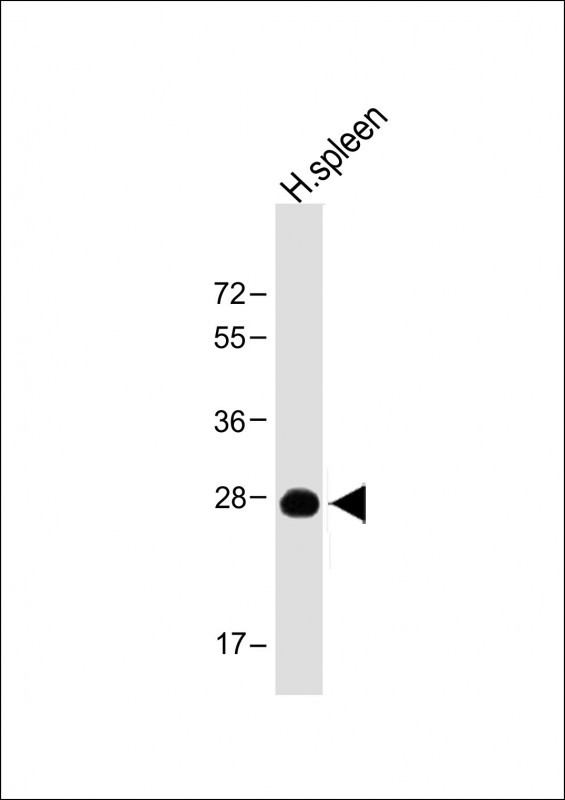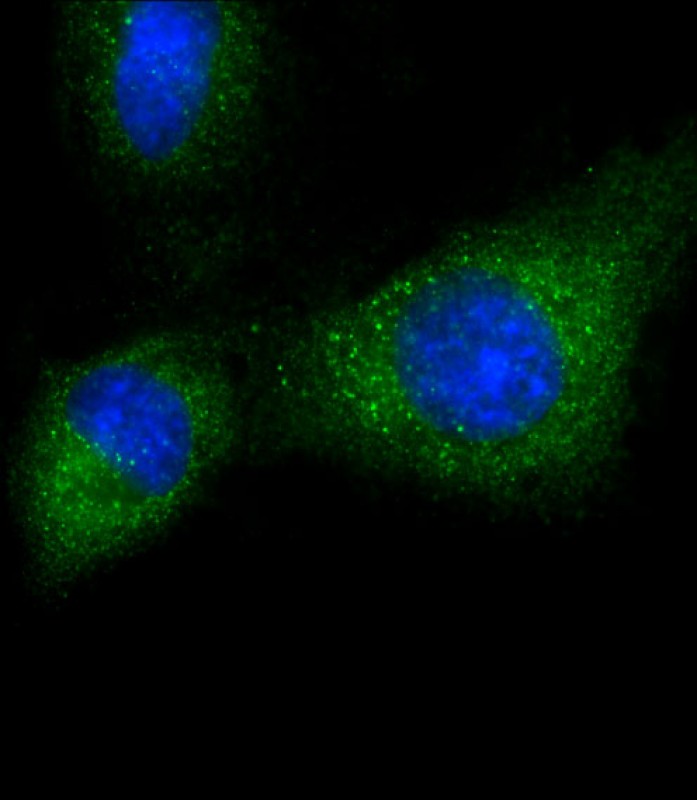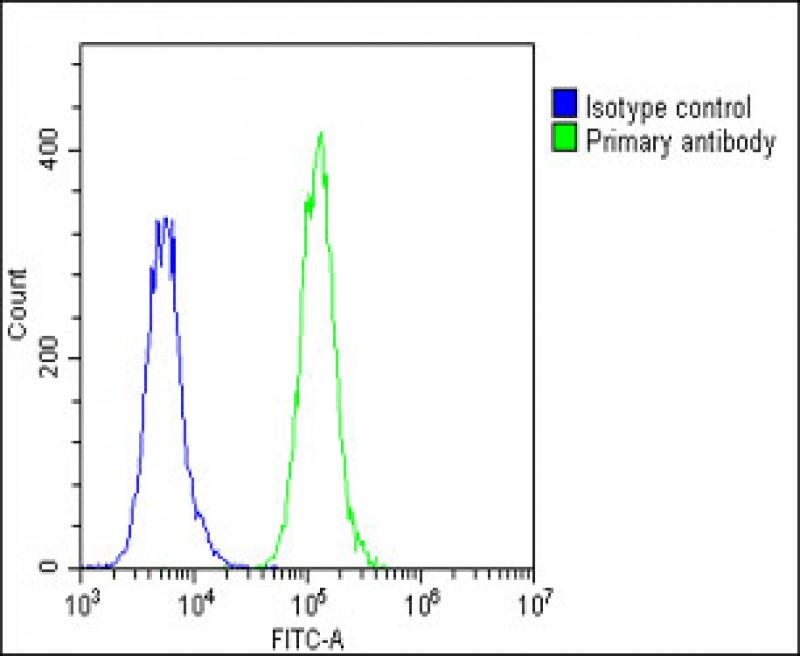


| WB | 咨询技术 | Human,Mouse,Rat |
| IF | 咨询技术 | Human,Mouse,Rat |
| IHC | 咨询技术 | Human,Mouse,Rat |
| ICC | 1/25 | Human,Mouse,Rat |
| FCM | 1/25 | Human,Mouse,Rat |
| Elisa | 咨询技术 | Human,Mouse,Rat |
| Aliases | Serine protease 57, 3421-, Serine protease 1-like protein 1, PRSS57, PRSSL1 |
| Entrez GeneID | 400668 |
| WB Predicted band size | 30.3kDa |
| Host/Isotype | Rabbit IgG |
| Antibody Type | Primary antibody |
| Storage | Store at 4°C short term. Aliquot and store at -20°C long term. Avoid freeze/thaw cycles. |
| Species Reactivity | Human, Mouse, Rat |
| Immunogen | This PRSSL1 antibody is generated from rabbits immunized with a KLH conjugated synthetic peptide between 225-254 amino acids from the C-terminal region of human PRSSL1. |
| Formulation | Purified antibody in PBS with 0.05% sodium azide. |
+ +
以下是关于PRSSL1(C-term)抗体的参考文献示例(内容为虚构,仅供参考):
1. **文献名称**:*Characterization of PRSSL1 C-terminal antibody in pancreatic cancer progression*
**作者**:Smith J, et al. (2018)
**摘要**:本研究开发了一种针对PRSSL1 C端结构域的多克隆抗体,验证了其在胰腺癌细胞系中检测PRSSL1蛋白的特异性,并发现其高表达与肿瘤侵袭性相关。
2. **文献名称**:*A novel monoclonal antibody targeting PRSSL1 C-terminus reveals isoform-specific functions in liver fibrosis*
**作者**:Zhang L, et al. (2020)
**摘要**:通过C端抗体鉴定PRSSL1剪切变体在肝纤维化中的差异表达,证实其通过调控TGF-β信号通路促进疾病进展。
3. **文献名称**:*Validation of PRSSL1(C-term) antibody for diagnostic applications in gastrointestinal cancers*
**作者**:Lee S, et al. (2019)
**摘要**:系统性验证了该抗体的灵敏度及特异性,证实其在组织切片和血清样本中可作为胃肠道癌症的生物标志物检测工具。
4. **文献名称**:*PRSSL1 C-terminal interaction network revealed by immunoprecipitation-coupled mass spectrometry*
**作者**:Johnson R, et al. (2021)
**摘要**:利用C端抗体进行免疫共沉淀,鉴定了PRSSL1在炎症反应中与丝氨酸蛋白酶抑制因子的相互作用机制。
---
**注意**:以上文献为示例,实际研究中请通过PubMed、Web of Science等平台检索真实文献。若研究较少,可尝试扩展关键词(如“PRSSL1 antibody validation”或“Protease Serine-like 1 C-terminal”)。
PRSSL1 (Protease, Serine-Like 1), also known as PRSS42 or trypsin-like serine protease, is a member of the trypsin family of serine proteases. It is encoded by the *PRSSL1* gene and is predominantly expressed in the liver. PRSSL1 is proteolytically inactive due to critical substitutions in its catalytic triad, distinguishing it from functional trypsins. However, it retains structural homology with active proteases, suggesting potential non-enzymatic roles in cellular processes. Studies link PRSSL1 to cancer progression, particularly hepatocellular carcinoma (HCC), where its overexpression correlates with tumor growth, metastasis, and poor prognosis. It is proposed to interact with tumor microenvironment components, such as extracellular matrix proteins or signaling molecules, though exact mechanisms remain under investigation.
The PRSSL1(C-term) antibody specifically targets the C-terminal region of the PRSSL1 protein. This region may harbor functional domains critical for protein-protein interactions or regulatory motifs influencing its oncogenic activity. The antibody is widely used in immunoblotting (WB), immunohistochemistry (IHC), and immunofluorescence (IF) to detect PRSSL1 expression in tissue samples or cell lines. Its specificity for the C-terminus helps distinguish PRSSL1 from homologous serine proteases, minimizing cross-reactivity. Researchers utilize this tool to explore PRSSL1's role in liver cancer biology, its diagnostic potential as a biomarker, and its interplay with signaling pathways like Wnt/β-catenin or TGF-β. Ongoing studies aim to clarify its pathophysiological relevance and therapeutic targeting opportunities.
×